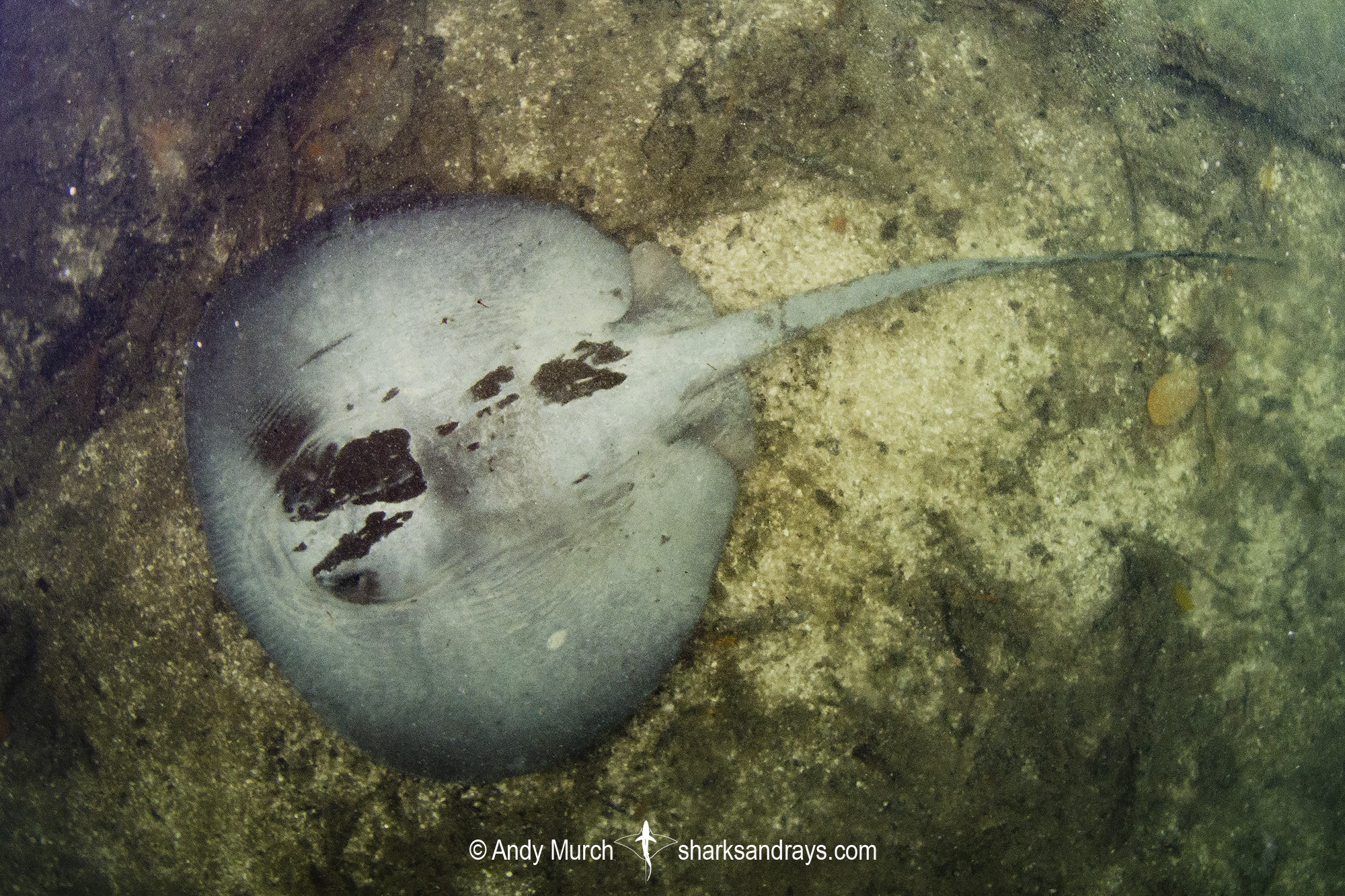Common name
Atlantic Chupare Stingray.
Binomial
Styracura schmardae.
Synonyms
Dasyatis schmardae, Himantura schmardae, Himantura schmarde, Trygon schmardae.
Identification
A large stingray with a sub-circular disc that is slightly wider than long. Small lobe present on tip of snout. Anterior margins of disc almost straight, apices broadly rounded. Head relatively broad. Eyes small, slightly protruding. Spiracles rather large. Nasal curtain broad with fringed posterior margin. Mouth with 5 oral papillae. Labial furrows short.
Disc densely covered in large, flattened denticles; denticles more pointed on snout and dorsally on tail. Denticles enlarged on midline. Usually with two highly enlarged, pearl-shaped thorns on each shoulder. Pelvic fin posterior margins protrude beyond disc. Tail long, broad based, tapering gently to dorsal spine, then whiplike to tip. Tail with distinct lateral ridges and a low ventral finfold near base. Caudal sting origin positioned slightly anterior of mid tail.
Colour
Dorsum grey, olive-grey, greenish-brown without markings but darker towards disc margins and tail. Ventrum yellowish-white often dusky towards margin. Tail dark ventrally.
Size
Maximum disc width 180cm. Disc width at birth unknown.

Conservation Status
ENDANGERED
Although the Atlantic Chupare Stingray population in the Caribbean appears to be relatively stable due to low fishing pressure, widespread, unregulated targeting of elasmobranchs throughout most of Central and South America has led to major declines in those areas. In the 1970’s Styracura schmardae was common in Colombia, Venezuela, and northern Brazil, but it is now rarely encountered.

Habitat
Tropical inshore environments; sandy substrates, seagrass beds, mangroves, lagoons, and estuaries.
Distribution
Western tropical Atlantic. Southern Gulf of Mexico, Caribbean chain, and Central American coast to northern Brazil. Common around the mouth of the Amazon.
Reproduction
Presumably viviparous. Litter size unknown.
Diet
Diet unknown.
Behavior
Poorly known. Observed foraging for sessile animals in shallow mangrove lagoons (personal observation).
Reaction to divers
Usually difficult to approach unless habituated to the humans.
Diving logistics
Although the Atlantic chupare stingray is poorly understood by science, sightings by snorkelers occur fairly regularly.
I have seen this species in Oyster Bed Lagoon in Utila Island, Honduras, and in Nichupte Lagoon on the Yucatan Peninsula. These sightings suggest that it is probably common in mangrove fringed lagoons within its range.
What’s new
View our full list of updates
Similar species
Pacific Chupare Stingray Distinguished by much smaller size, more pointed snout, single thorn on each shoulder, and eastern Pacific range.


